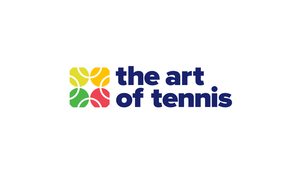The World’s Easiest and Best Tennis Tip

If we strip back everything else about tennis, fundamentally its a game where a ball comes over a net then normally bounces before you have to hit it back over the net.
Everyone knows they have to watch the ball and yet still fail to deliver. This can be because of distracted thoughts or after a break from playing. To be held accountable to watching the ball you need to measure your timing.
Here is a great look at Federer watching the ball. This is a great example as he holds his gaze in the contact area longer than other pro players.
If you are playing ‘in the moment’ then naturally you will be watching the ball. However sometimes if your timing starts to go off it can be very hard to get it back. To help you get your timing to where it should be there is a very simple method called the Bounce/Hit.
The Bounce/Hit
Instructions are simply to call out ‘Bounce’ when the ball hits your side of the court and then ‘Hit’ when you contact the ball. The timing of your words must be exactly when the ball impacts the ground and your strings.
The bounce/hit is one of many gems from the famous book, Inner ame of tennis by Timothy Gallwey. The aim of it is to quieten the mind from distracting thoughts and to have the exact awareness of the 2 pivotal points to hit a stroke. In other words you are held accountable to watching the ball.
A substitute that I personally prefer is to replace bounce with “1” and hit with “2”. The words are less important than the timing of saying them. Ive even asked kids to make up their own words to the bounce/hit and although this can be lots of fun, it can make the focus a bit scattered.
Hit the ball late?
If your someone who is late on your shots you will generally start by calling the word “Bounce” late. Once you work on it for a while that will be easily corrected if you practice weekly drop feeding, coach/partner feeding and lots of rallying.
The next level
Once this is easily done then the next level is to call the other end of the court. The best way is to call “Split” when they hit the ball and again call ‘Hit’ when they strike it. It will then sound like “Bounce, Hit, Split, Hit” for the 2 shots. The “Split” is obviously also the spot where you need to be landing your split step to prepare you for the next ball.
To use the number method you would call “1, 2, 3, 4” which is simple and effective but distracting if your both doing the calls on court.
This is actually very hard to do and you will naturally want to say that the exercise is stupid and not helpful. This is a natural resistance from the distracting thoughts which think through the entire duration of the shot rather than just focus on the pivitol points of bounce and hit and trust the body to move accordingly.
Timothy Gallwey was a pioneer in the mental side of the game. Some of his methods are fundamental to what I believe and have experienced as a coach. The concept of over coaching or over instructing is very real as it is too hard to remember such details in a split second consciously. Sometimes the best advice a tennis coach/teacher can pass on to his players is to think less!
This video is very old school and clearly a very different philosophy to some. The best advice I can give is to try it out and see how it works for you. Also don’t start doing it in a match……..that wouldn’t go down very well, just during practice…….
If your in Perth, Western Australia, come down and see us at The Scarborough Tennis Academy.
Cheers
Rick Willsmore
rick@scarboroughtennis.com.au
















